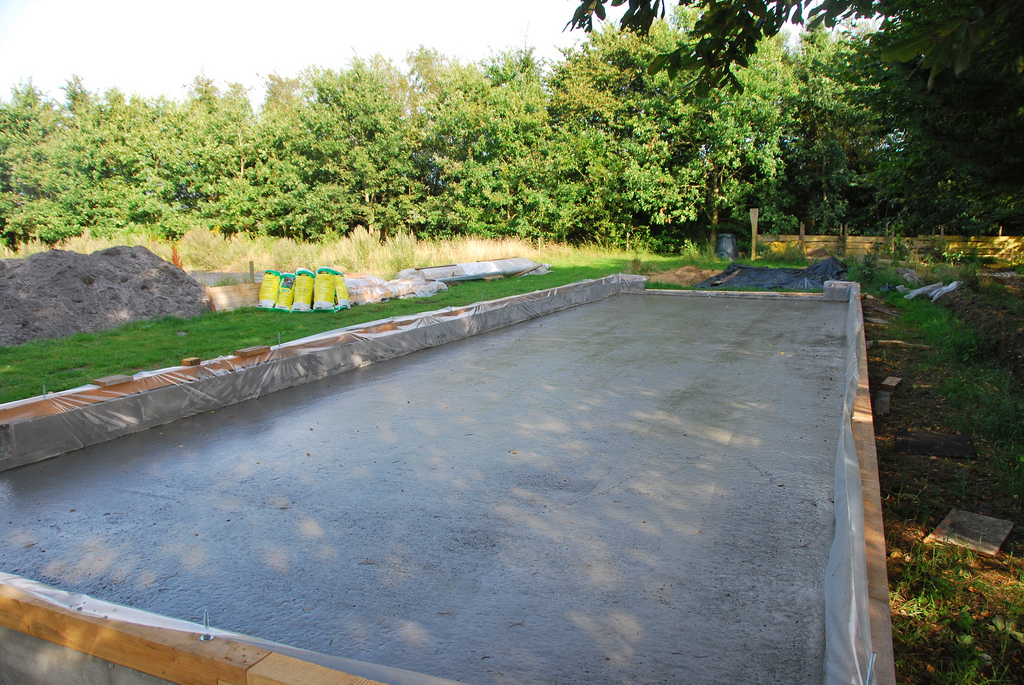Laying a concrete foundation for a home is not a simple task. Unless you are a contractor, it’s best to leave this one to the professionals and hire a company to pour the cement and tackle all the other details. Foundations are crucial because they form the basis for any building, whether a high rise or a residential home. A foundation is the cornerstone of stability for a structure, preventing it from sinking into the ground.
The whole process requires lots of materials, plenty of time, and professional expertise, but we’ll let you in on the general overview of how a foundation is created, from start to finish.

The Process in a Nutshell
While it takes many days or weeks to properly pour a concrete foundation, depending on the size of the project, there are some standard steps to be followed. First, you need to survey the immediate area and stake it out. This ensures the home will sit far enough back from the street and other neighbors, while providing a blueprint for the entire project. The stakes are necessary because they mark the area where the excavator will dig, making a slightly larger hole than the foundation is planned to be.
After excavation is complete, it’s time to pour the footings. These footings are also wider than the foundation walls they will soon support. Next up is the installation of the plumbing lines, followed by the drainage system and sump pump if needed. Contractors then pour concrete between sets of formwork to make the walls. Once set, the formwork is taken away to reveal the structure, with the thickness of the walls varying from home to home. Anchor bolts secure the framing to the foundation, and beam pockets hold beams firmly in place. The addition of a damp proofing or waterproofing seal stops water from seeping into the basement.
Next, contractors pour a concrete slab between walls for stability, and then add backfill for further reinforcement. The type of foundation you go with — whether slab or below-grade foundation — will depend on several factors, such as high water tables, frost lines, harsh winters, and vulnerability to storm surge and high winds, says home improvement expert Bob Vila.
Choosing a Foundation Contractor
Foundation contractors — professionals that pour foundations for homes and businesses — can handle projects ranging from homes to small companies with small-scale needs to large companies or facilities departments on large-scale projects. They can also inspect existing foundations and look for signs of potential trouble, such as horizontal or vertical cracks. When searching for a contractor, it is vital that you do your research on products and services used in the foundation installation process, from tools to equipment. Get quotes, a list of services, availability, and licensing and insurance information from any company you consider. Some websites allow you to select a prescreened contractor that fits your specifications for price, location, time frame and other factors.
The concrete laying process is complicated, but with a little knowledge and research, you can educate yourself on your foundation project.
Byline
Vincent Danforth is a freelance writer focusing on home improvement, concrete laying, outside patios, external renovation, landscaping and other subjects; those interested in learning more about concrete laying can view the following information about a concrete overlay in Houston, Texas.
Image credit goes to julochka.

